On April 22, 1998, Earth Day, Disney’s Animal Kingdom opened with much fanfare. The park was more than 30 years in the making because the original idea of putting live animals in display in a theme park started when Walt Disney was planning Jungle Cruise at Disneyland. He wanted the animals in the attraction to be live, but his Imagineers warned him that they couldn’t control live animals. Instead, they decided to use animatronic animals that you still see in the Jungle Cruise today.
Animal Kingdom was the fourth theme park in Disney World, and it remains the newest park at the Florida resort. It is a unique park in that it is part theme park, part zoo; there’s nothing like it in any other Disney theme parks and there’s nothing like it anywhere else in the world.
Today, we’re going to celebrate Animal Kingdom’s 20th anniversary with 20 surprising and interesting facts about this incredible place!
1. It’s the largest theme park
Disney’s Animal Kingdom is the largest Disney theme park at 540 acres. Disney has twelve theme parks in six resorts around the world, and Animal Kingdom is the biggest one by far. In fact, it’s almost double the size of Epcot, which is like two parks in one with Future World and World Showcase.
It’s not just the park that is impressive in size. The park also holds the largest Rainforest Café in the entire world. There’s plenty of space inside because of its size.
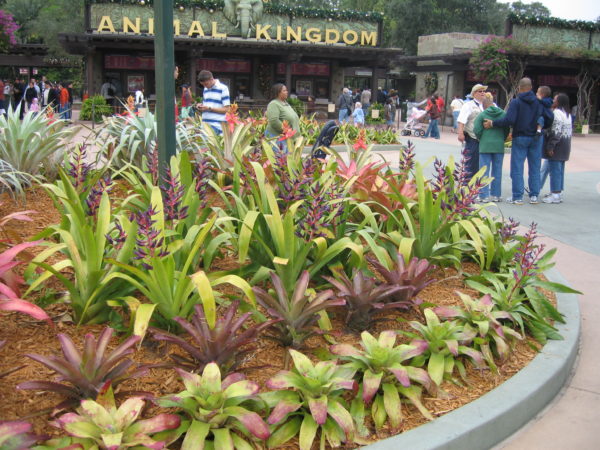
2. From Barren to Lush
It’s a well-known fact that Disney World looks much different from what it did before Walt came along. Much of it was swamp (or marshland, as Floridians like to say), but Animal Kingdom was covered in sand dunes.
Nothing is impossible for Disney though! Imagineers were sent to Africa and Asia to study the landscape and the wildlife, and they came back with ideas about how to turn sand into forest.
It took 500 workers and eight years to transform the park into the lush landscape that you see today. They moved a million square feet of rockwork to create paths and natural-looking topography.
3. Real, Ancient, and Imagined
Disney’s Animal Kingdom was always meant to be a park for all animals – real, ancient, and imagined. In fact, Michael Eisner said these exact words in his opening day dedication, and it remains on the plaque at the park entrance.
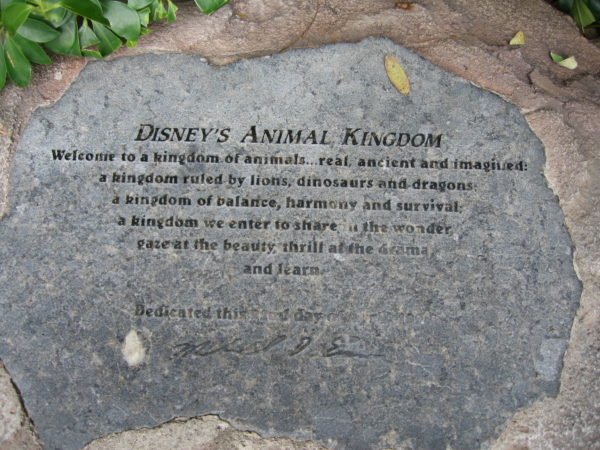
There are obviously real animals like big cats, primates, elephants, reptiles, birds, and more. The “ancient” animal vision is fulfilled in Dinosaur and Dinoland USA.
But the original goal included “imagined” animals, too. Beastly Kingdom was supposed to be result. It would have included fictional creatures like unicorns and dragons, but it never happened.
Nearly 20 years after the park opened, the “imagined” dream was finally fulfilled with Pandora – The Land of Avatar with the fictional animals being banshees.
4. Tree of Life
All Disney theme parks have an icon, and the Tree of Life is Animal Kingdom’s. This “tree” is not alive though. In fact, it’s made out of concrete framed over a retrofitted oilrig. It’s 145 feet tall and holds over 100,000 leaves that are also not natural. They’re made of a synthetic thermoplastic polymer designed to withstand hurricane force winds without detaching from the tree.
The only thing real about the Tree of Life is that it’s based on the real-life baobab trees found in Africa and other arid regions in the southeastern world. The tree in Orlando may be man-made, but it’s definitely a case of art reflecting life!
Speaking of art, it took ten artists and three Imagineers a year and a half to form the tree and carve 325 animals into the trunk and roots. You can find “real, ancient, and imagined” animals in the images!
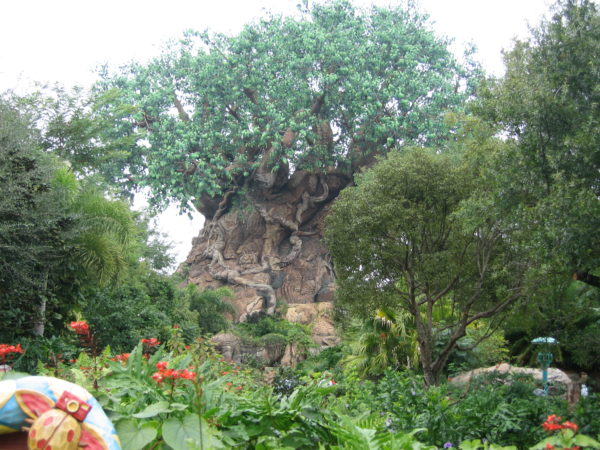
5. Hide and Seek
Most Disney park icons are designed to beckon guests from the minute they enter the park. However, Animal Kingdom’s icon is a bit different in that it can’t be seen from the park’s entrance. Like other Disney designs, that was a purposeful move. The Oasis section, which you encounter first, creates wonder with exotic plants, small animals, and maybe even DiVine’s occasional appearance. It’s a slow immersion into the wonder of life with the Tree of Life being the climax.
Also, the Tree of Life may be large, but it’s kind of inconspicuous. It’s the only park icon that doesn’t represent a building (like Cinderella Castle in Magic Kingdom and Sleeping Beauty Castle in Disneyland), but it very much fits the theme of the park. It’s really hard to miss, but you could easily walk right past it without realizing the beauty that is within.
6. Room to Roam
Obviously, the main attractions of Animal Kingdom include the animals. There are a couple self-guided walking trails, but Kilimanjaro Safaris is the most popular way to see the animals.
This 110-acre safari offers an 18-minute attraction led by a knowledgeable tour guide who drives you through the massive African Savanna. How big is it? It’s the largest attraction in any Disney theme park, and it’s about the size of the entire of Magic Kingdom.
It appears that the animals live free to roam in the “wild.” but a little bit of Disney magic keeps them safe from harm from natural predators and keeps guests safe while travelling through. There aren’t any visible barriers, but Disney uses natural features like water, moats, and camouflaged fences to keep the animals where they’re supposed to be. What Disney did in this park had never been done on this scale before.
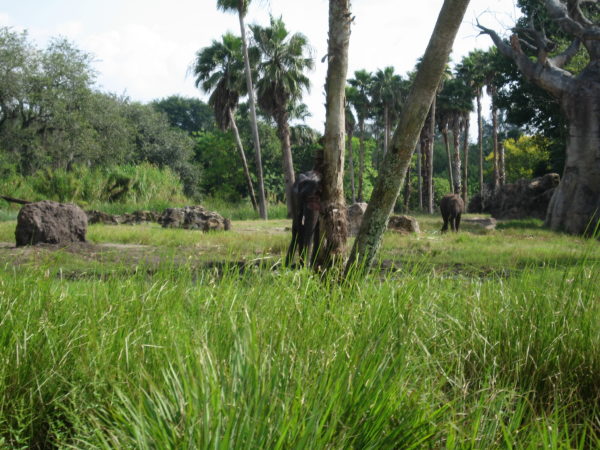
7. Lots of Animals
It’s a good thing there’s lots of space because there are also lots of animals! The park holds 300 species and around 2,000 animals. They were brought in from other accredited zoos and aquariums and include the endangered species of Sumatran tigers, Western Lowland Gorillas, and Cotton-topped Tamarins. There are also four million trees, grasses, and shrubs from every continent except Antarctica to support all of these animals.
It has to be a lot of work to care for so many animals of all kinds, but the Animal Kingdom trainers are some of the best. They’ve trained each species to respond to a different sound to return to their shelters for the evening where they’re safe and can receive routine care. Zebras respond to cowbells and giraffes respond to whistles. The animal exhibits typically close an hour before the park closes to allow the trainers to prepare the animals.
8. Design Details
Disney is all about the details, and it’s no different when it comes to the animals. It’s important to keep their habitats as natural as possible while keeping them in view of the guests, and there are some pretty ingenious ways that Disney makes this happen. They hide snacks, water, salt licks, and feeders in stumps, rocks, and reed beds to encourage the animals to stay where they want them! What’s more, if you’re wondering why the lions are always perched on top of their rock, it’s not because they’re lazy. The rock is climate controlled so it’s warm in the winter and cool in the summer!
Kilimanjaro Safaris is created to look natural though, and it’s not just in the animal’s areas. The roads look like rutted, muddied paths that have been well-worn over the years. However, they’re made of concrete that was perfectly matched to the surrounding soil. While the concrete was still wet, Imagineers rolled tires through it and tossed in natural stones, dirt, and sticks to make them look like a remote road in Africa. What’s nice about concrete is that it takes very little maintenance.
9. Huge Hidden Mickey
Kilimanjaro Safaris may be known for its real life animals, but the Mouse is still the main man. If you’re spotting Hidden Mickeys, Kilimanjaro Safaris is definitely one you’ll want to look for. When you approach the flamingos, look on the island, which itself makes up one of the largest Hidden Mickeys in Disney World.
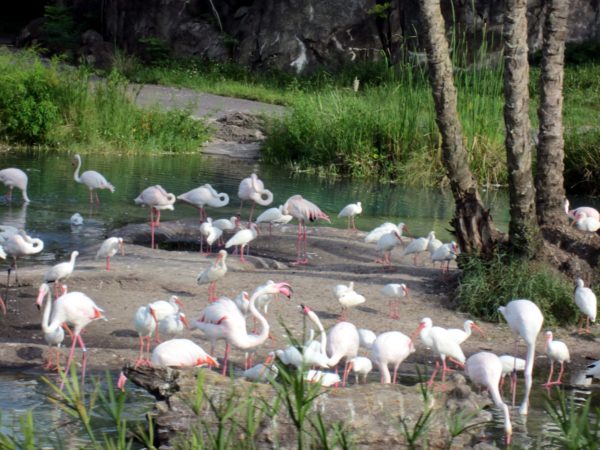
10. Sounds of Nature
Do you hear that? No, it’s not Disney music. It sounds like nature! As with other things in Animal Kingdom, it’s not natural though!
There are hundreds of speakers strategically placed throughout Animal Kingdom and camouflaged in the landscape. They play nature sounds all day in the “real” parts of the park and sounds of Pandoran animals in Pandora.
11. Close the doors!
Have you ever noticed that there are doors on the restrooms in Animal Kingdom but not on restrooms in the other theme parks? Again, that is by design. Disney prepared for everything, and in the unlikely event that a potentially dangerous animal would escape, guests could retreat to the restrooms, close the doors, and remain safe inside until the animal was returned to its enclosure.
12. The Tallest Mountain
Expedition Everest is one of the most popular attractions in the park that doesn’t include animals. At 199.5 feet, it’s the tallest mountain in any of the Disney parks, and Disney is known for its mountains (Space Mountain, Splash Mountain, Big Thunder Mountain Railroad, etc.). At 200 feet tall, structures must have indicator lights for aircraft, and Expedition Everest comes in just under that.
However, the mountain looks much taller than it appears thanks to Disney’s use of forced perspective. Imagineers used perfectly painted shadows, carefully carved crevices, and strategically placed glaciers to increase the apparent size of the structure.
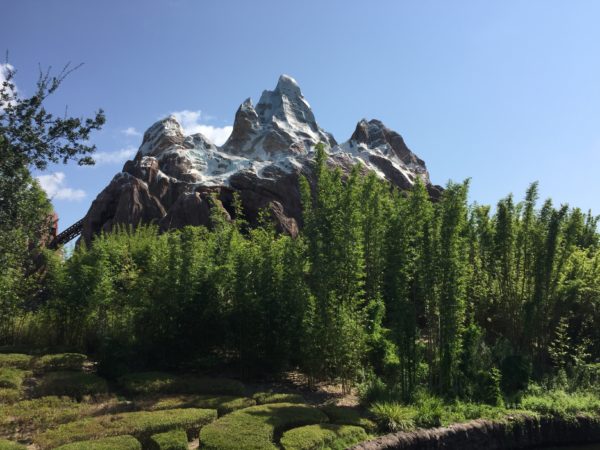
13. Expedition Everest
Speaking of the structure, the rough appearance comes from crumpled up aluminum foil buried into the concrete. Inside, there are actually three attractions in one. First, you experience the queue and show effects. Next is the ride itself, and finally, the 25-foot-tall Yeti. All three structures are built independently of each other, and they don’t touch at all, but they work together to create a perfect puzzle.
14. The Forbidden Mountain
Expedition Everest has lots of Mount Everest artifacts in the queue area, but the mountain itself doesn’t look like the real thing. In fact, Everest is the smaller peak to the far right of the taller ones.
The attraction that you experience takes place on the Forbidden Mountain, which is the fictional mountain that you experience while trying to get to Everest. The process of climbing Mount Everest takes years of preparation, which is a mountain to climb in itself.
15. Parade, Parade
Parades have been a mainstay in Disney parks, but Animal Kingdom has only had two parades in its 20 years.
The first parade was the March of the ARTimals during which performers dressed in artsy animal costumes and paraded around the park singing familiar favorites like La Cucaracha, Itsy Bitsy Spider and Let’s All Sing Like the Birdies Sing. The parade ran for about a year from opening day.
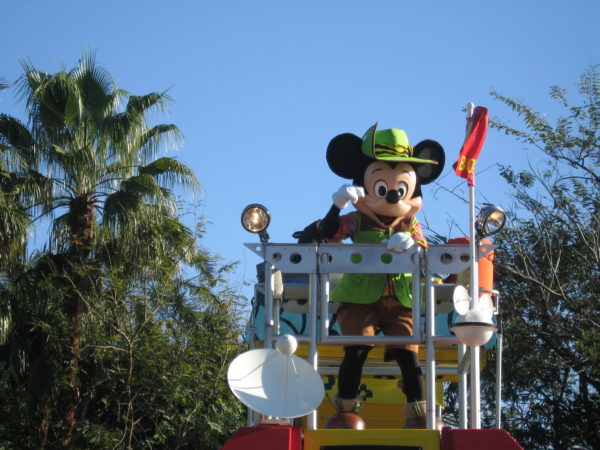
The second parade was Mickey’s Jammin’ Jungle Parade, which started on October 1, 2001 as part of Disney World’s 100 Years of Magic celebration. It ran every day at 4:45pm starting at the Tusker House Gate in Harambe Village and returning to this location about 15 minutes later. The parade was very successful and became the longest running daily parade in Walt Disney World history when it ended on May 31, 2014.
16. Lucky the Dinosaur
Another celebratory milestone started on May 5, 2005 as part of the 50th Anniversary of Disneyland. Lucky the Dinosaur arrived in Disney World as Disney’s first free moving audio-animatronic.
Lucky was nine feet tall, twelve feet long, and weighed in at 450 pounds. He roamed Dinoland and interacted with guests through giggles, burps, snorts, and coughs. He stayed for a few months then was shipped off to Hong Kong Disneyland where he remains today.
17. Pandora Floating Mountains
In more recent history, and as I mentioned earlier, Animal Kingdom finally fulfilled the dream of having imagined animals in the park when Pandora opened in 2017, but it’s not just the animals in Pandora that are impressive.
The land is based on the 2009 film called Avatar, which takes place on an alien planet called Pandora. One of the main features of Pandora is the floating mountains. Obviously we have gravity on Earth, so it was quite a feat to accomplish this look, but Disney was up to the task.
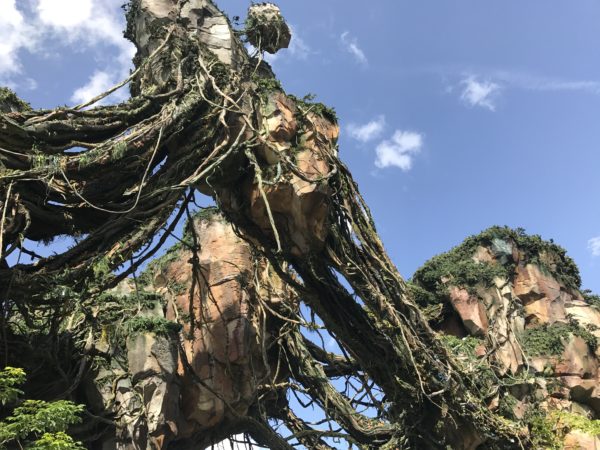
Imagineers created 22 floating mountains supported by rigid steel supports covered with vines to create the illusion of floating mountains. The supports were so large that some of them needed to be brought in on special trailers! Disney called a favor into NASA and borrowed trailers used to move the space shuttle to create a “realistic” representation of the fictitious Valley of Mo’ara with the highest peak being 130 feet.
18. Pandora at Night
The landscape doesn’t end with the mountains, which are best seen during the day, though. At night, Pandora becomes a completely different place as the bioluminescent plants come to life. There are thousands of real trees and shrubs among the Pandoran plants, and even the walkways are painted with a special chemical that is charged by sunlight during the day.
19. Accreditations galore
When Disney does something, it does it very well. While animal rights activists have criticized the park throughout the years, Animal Kingdom has earned accreditations from the Association of Zoos and Aquariums and the World Association of Zoos and Aquariums. To receive this status, parks need to have met or exceeded standards in educational experiences, conversation efforts, and research.
The animals are Disney’s top priority. This is so important that they built a park knowing that it would only be open during the day for the safety of the animals. Only within the last few years has the park opened after dark. During normal hours, there are plenty of educational opportunities. One of my favorite overlooked spots is Rafiki’s Planet Watch where you can find Conservation Station and the Affection Section.
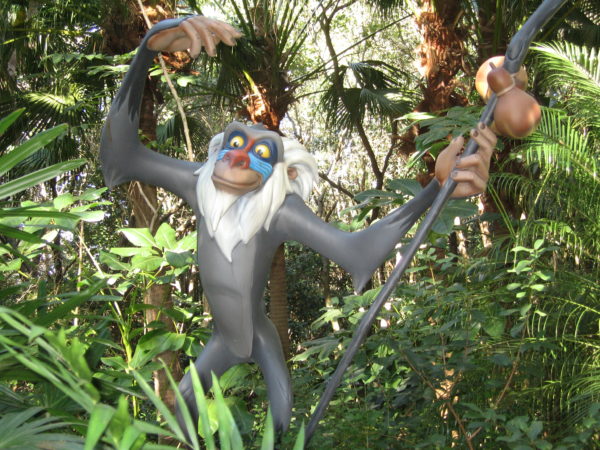
Disney also limits the use of potentially dangerous things like plastic straws, lids, and balloons, all of which can be found in all of the other theme parks. Instead, they use biodegradable paper straws and only provide lids for hot drinks.
When it comes to research and conservation efforts, Disney has increased endangered animal species significantly. They have birthed seven elephant calves, eleven giraffes, and eight white rhinos, one of which was born to an original Animal Kingdom mother! In real life, Disney sponsored the first white rhino born in the wild in Uganda in 25 years! This is a significant event for a species that is near extinction.
20. Very Popular
If it’s not obvious yet that I really like Disney’s Animal Kingdom, let me tell you now that I do. And I’m not the only one. It’s the fourth most visited theme park in the United States, the seventh most visited in the world. It welcomed an estimate 11 million visitors in 2016.
Happy 20th Anniversary Animal Kingdom! Are you a fan?

